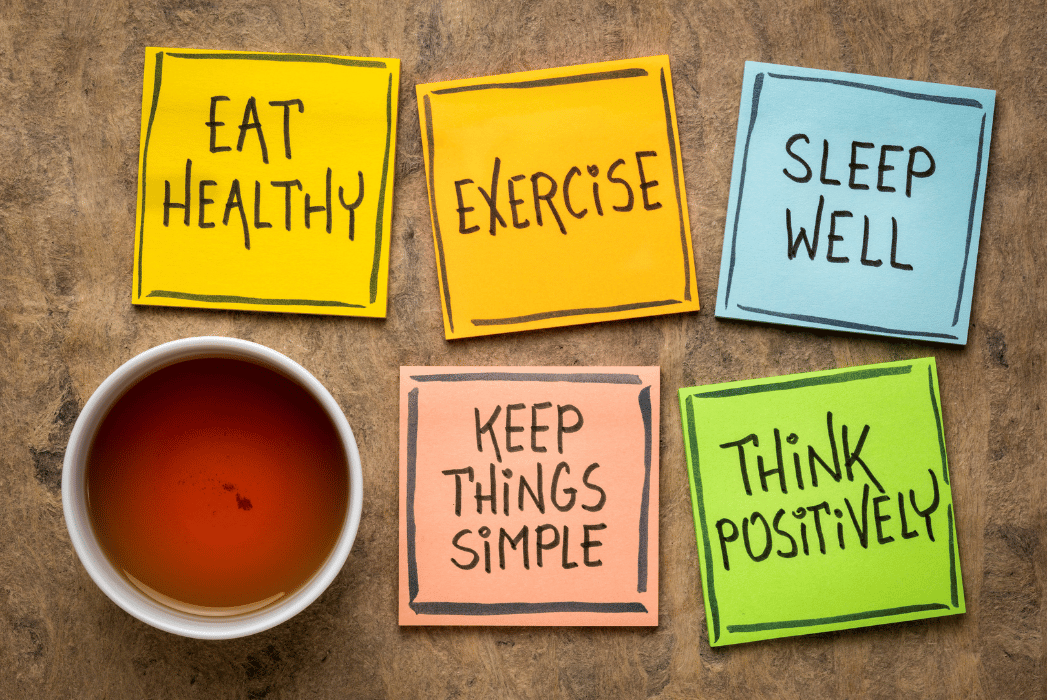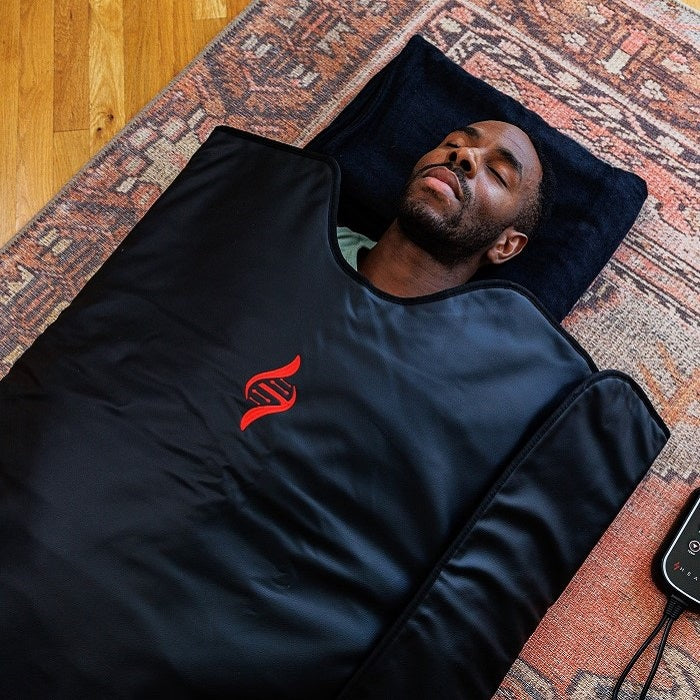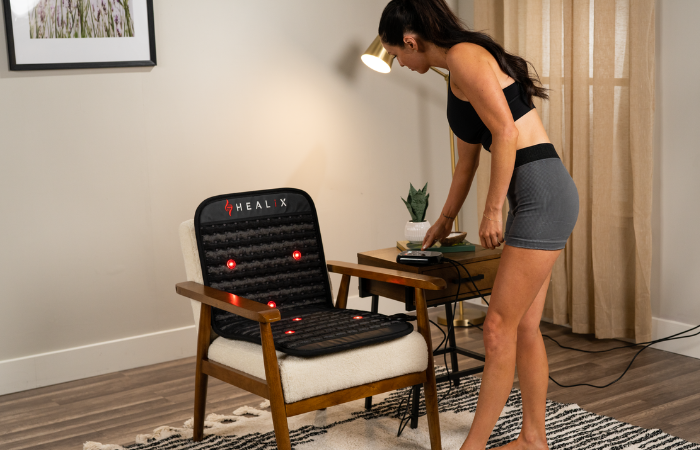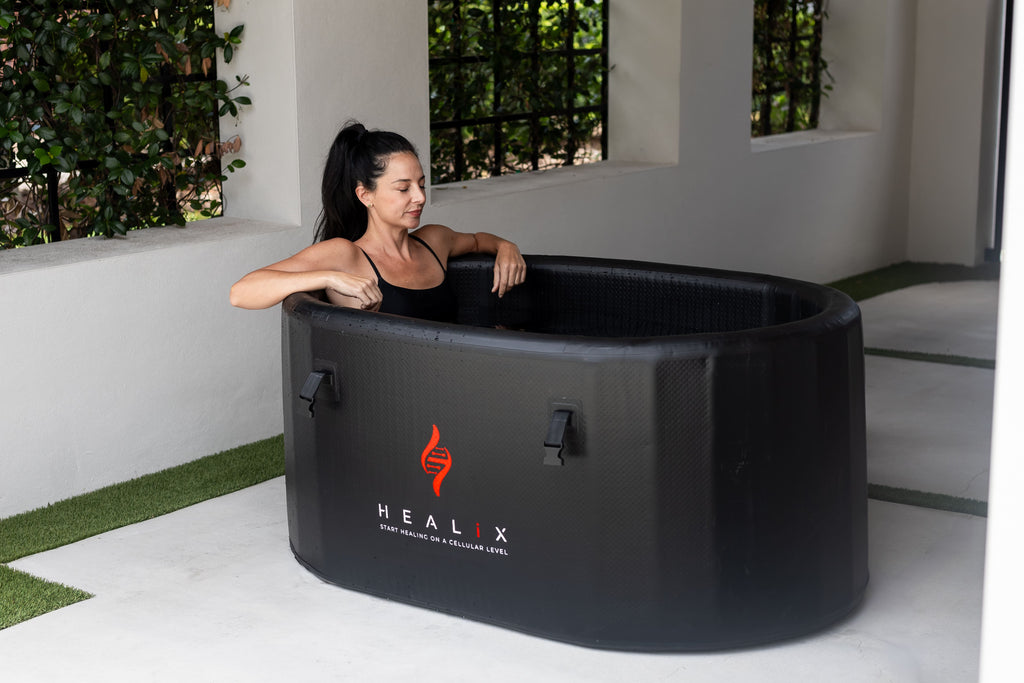Lower Stress And Extend Life With Your Mind: 3 Easy Ways & How To Make Them Habit
Lower Stress And Extend Life With Your Mind: 3 Easy Ways & How To Make Them Habit

September 8th, 2021 | Infrared Tech
Don’t think you can create physical change just by shifting your mindset? We’re here to explain why that’s not true—and how you can start doing it easily. While we’ve already shared tips on diet and exercise to help manage cortisol and stress, trained thinking is the silverback gorilla of stress domination. It’s the top tool in the kit. You probably know it better as meditation.
Now, get rid of that picture in your head of a monk humming, “UHHHMMMM...” Bald, robed, legs crossed, pinky to thumb, eyes closed on top of a mountain—yeah, that’s not how most people are doing it. And it’s definitely not necessary to get results.
We’re going to share three simple methods to help you begin reclaiming your wellness through your thoughts. Once you try them, you’ll see how straightforward and powerful they really are.
But before we get into that, here are a few wild stats that even caught us by surprise:
8 Crazy physical results of meditation
They're all impressive... and they're all backed by research.
- Meditation can reduce insomnia by 50%¹
- Just four days of meditation can increase your attention span²
- Meditation can reduce the risk of being hospitalized for coronary heart disease by 87%³
- Practicing meditation for six to nine months can lower anxiety levels by up to 60%⁴
- Studies show meditation can significantly relieve back pain by retraining pain pathways⁵
- Consistent meditation practice helps lower blood pressure⁶
- Meditation has been shown to reduce depression relapses by approximately 12%⁷
- Regular meditation increases telomerase—an enzyme linked to delaying Alzheimer’s and other age-related diseases⁸

It's All Connected
All of this is just as good as it sounds. At the very least, a decrease in coronary disease, anxiety, and depression should be something everyone aims for. But what’s often missed in these impressive stats is how it’s all connected.
We’re talking about meditation because our goal is to help lower cortisol. If you’ve read our blog on How Cortisol Is Killing You, you already know how damaging the stress hormone can be. What these stats really show is that reducing cortisol leads to a lot of good things. So, hopefully, this gives you a little extra motivation to consider forming a new habit!
Scroll down to discover three simple meditative practices that can help you lower cortisol and start achieving all the amazing benefits listed above.
1. Visualization
All it takes is 5–15 minutes—and the best part is, you can do it practically anywhere. So, anytime stress starts to creep in and feel overwhelming, this can be your go-to for instant relief.
Sit still, close your eyes, and imagine you're resting on a white sand beach. Take a slow, deep breath in. As you inhale, focus on feeling calm, relaxed, and safe. While continuing to breathe slowly with your eyes closed, begin to visualize the beach in as much detail as possible. For example:
- The clear, blue water sparkling in the sun
- The bright, cloudless sky stretching overhead
- The warm, soft sand between your toes
- The gentle sound of waves crashing on the shore
- The refreshing taste of a cool drink in your hand
Relax your face, and release any tension in your forehead, between your eyebrows, your neck, and your throat. Let your breath slow down, syncing with the rhythm of the waves on the shore. Spend time simply being in the imagery you’ve created—recognizing more and more detail with each breath.
That’s really all there is to it. You can easily replace the beach scene with any other setting you find calming. The key is to imagine a relaxing place and focus on as many small details as possible. While visualizing those details, stay aware of your body and consciously relax your muscles.
Although you can practice this almost anywhere, we recommend setting a goal of about 10 minutes once a day. It’s especially helpful at the end of the day or before bed—it may even help you fall asleep.
For more ways to relax your nervous system and promote better sleep, explore our blog: Enhancing Relaxation Through the Synergy of Red Light Therapy and Aromatherapy.
2. Deep Breathing
This practice is even quicker. Just 3–5 minutes can have real physiological effects. Deep breathing exercises promote a biological state of calmness, which supports our goal of lowering cortisol levels and improving overall wellness.
Just Follow These Steps:
- Get comfortable. You can lie down on your back in bed, sit on the floor with good posture, relax in your favorite armchair, or even do this at your desk.
- Breathe in slowly through your nose, focusing on filling your belly with air. Once your belly expands, continue by filling your lungs—imagine the air rising from the bottom up.
- Exhale slowly through your nose.
- Place one hand on your belly and the other on your chest.
- Continue breathing deeply in and out through your nose. As you inhale, feel your belly rise. As you exhale, feel it lower. The hand on your belly should move more than the one on your chest.
- Focus on the rising and falling of your belly, and repeat this process continuously.
You can experience short-term results in as little as 3–5 minutes. However, we recommend practicing for 10–30 minutes to gain maximum, long-term benefits.
Looking for additional methods to regulate hormones and support adrenal function? Discover how infrared sauna blankets can help in our blog: Top 10 Benefits of Infrared Sauna Blankets: Everything You Need to Know.
3. Mindfulness
This is a buzzword you’ve probably heard often—and for good reason. Mindfulness simply means becoming more physically and mentally aware of the present moment. A simple and powerful mindfulness exercise is the “Body Scan.” Practicing this for just 5–15 minutes can deliver real benefits.
We’re all familiar with the sensation of touch—feeling an object through our fingertips. But this exercise takes things further by helping you tune in to sensations inside your body, starting with your hands and spreading throughout.
We’ll guide you through it. Try it more than once—it becomes easier with practice.
- Get comfortable. Lie on your back in bed, sit on the floor with good posture, relax in your favorite armchair, or even lie in the tub.
- Close your eyes and begin by focusing on your fingers and hands. Maybe wiggle them a little. Notice any sensations—many people feel a dull, pulsing warmth or a light “pins and needles” feeling when they truly focus.
- Now imagine that warmth spreading from the outermost layer of your skin deep into your hands. Let it move through all your fingers, then your palms and the backs of your hands. Next, move to your toes. Feel that same warmth spreading from your toes to the soles and tops of your feet.
- Now, guide that sensation up to your forearms and lower legs.
- Continue working upward until the sensation meets at your core—bringing awareness to both your upper and lower body.
- Hold that awareness as long as you can. If you lose it, gently bring your focus back and start again.
The purpose of this practice is to root yourself fully in the moment. The longer you can stay focused, the more effective it becomes. Don’t worry if you can’t achieve a full-body scan right away—many people can only focus on their hands or feet when starting out.
Keep practicing! Each session helps calm your mind and brings the physiological stress-relief benefits you’re aiming for.
Form the Habit for Long-Term Success
The hardest part of these three practices? Doing them consistently over time.
We’ve helped many people build new habits—because that’s exactly what you’ll need to do if you’re not already practicing them regularly.
When it comes down to it, forming a new habit is pretty straightforward: it requires short-term discipline for 3 to 5 weeks. That’s about how long it takes for your brain to turn a consistent action into an automatic habit.
Many people feel overwhelmed at the thought of sticking to something for that long. Whether they realize it or not, that resistance usually comes from a false belief—that it’s going to be difficult forever.
But here’s the truth: if you can stay disciplined until the habit forms, it becomes much easier. In fact, once the habit is in place, it often becomes harder to break than to keep.
References
1. Ong, J., & Sholtes, D. (2010). A mindfulness-based approach to the treatment of insomnia. Journal of Clinical Psychology, 66(11), 1175–1184. https://doi.org/10.1002/jclp.20736
2. Nagamatsu, L. S., & Ford, S. D. (2019). Can meditation improve attention in older adults? Study protocol for a 4-week proof-of-concept intervention. Pilot and Feasibility Studies, 5, 22. https://doi.org/10.1186/s40814-019-0413-x
3. Levine, G. N., et al. (2017). Meditation and cardiovascular risk reduction: A scientific statement from the American Heart Association. Journal of the American Heart Association, 6(10), e002218. https://doi.org/10.1161/JAHA.117.002218
4. Goyal, M., et al. (2014). Meditation programs for psychological stress and well-being: A systematic review and meta-analysis. JAMA Internal Medicine, 174(3), 357–368. https://doi.org/10.1001/jamainternmed.2013.13018
5. Zeidan, F., & Vago, D. R. (2016). Mindfulness meditation-based pain relief: A mechanistic account. Annals of the New York Academy of Sciences, 1373(1), 114–127. https://doi.org/10.1111/nyas.13153
6. Goldstein, C. M., Josephson, R., Xie, S., & Hughes, J. W. (2012). Current perspectives on the use of meditation to reduce blood pressure. International Journal of Hypertension, 2012, 578397. https://doi.org/10.1155/2012/578397 PMID: 22518287; PMCID: PMC3303565
7. MacKenzie, M. B., & Kocovski, N. L. (2016). Mindfulness-based cognitive therapy for depression: Trends and developments. Psychology Research and Behavior Management, 9, 125–132. https://doi.org/10.2147/PRBM.S63949
8. Alda, M., et al. (2016). Zen meditation, length of telomeres, and the role of experiential avoidance and compassion. Mindfulness, 7, 651–659. https://doi.org/10.1007/s12671-016-0500-5



